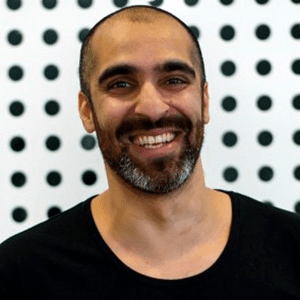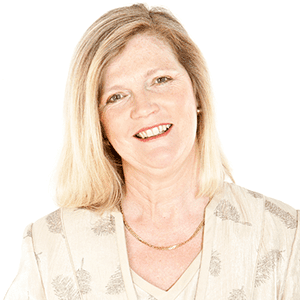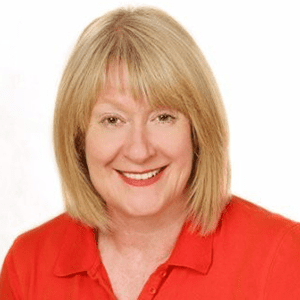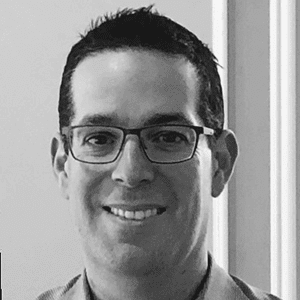

#30: Taking your company from good to great
Trudy MacDonald, is the founder and managing director of TalentCode HR, a strategic HR consulting business focused on helping leaders unlock the potential of their people to drive business performance.
In this podcast Trudy shares three straightforward tools and techniques for increasing performance in your teams.
Helping build a leaders’ capability to create engaged, purpose-driven, and accountable teams, with aligned efforts to deliver great outcomes.
Stephanie: Hello, and welcome to TEC Live. Stephanie Christopher here, Chief Executive of the Executive Connection. TEC connects CEOs, executives, and business owners to the world’s largest business leader network. My guest today is Trudy MacDonald, the founder and managing director of TalentCode HR, a strategic HR consulting business focused on helping leaders unlock the potential of their people to drive business performance. Sounds like a lot of words, but we’re going to break that down in a minute. Trudy’s career is founded on an education in organisational psychology and spans Australia, New Zealand, the USA and parts of Asia. I think it’s interesting when you look at an org-psych background, it’s actually a business background as well, because Trudy, I think you were saying it’s four different companies you’ve been CEO of along the way.
Trudy: Yes, that’s right.
Stephanie: Trudy MacDonald, welcome to TEC Live.
Trudy: Thank you, Stephanie. It’s a pleasure to be here.
Stephanie: So you know I have to do this, and talk about that we knew each other in a past life.
Trudy: We sure did.
Stephanie: And it was one of the business. So we were in the same industry-
Trudy: Yes.
Stephanie: … and I was MD of one organisation and you were MD of the other. And I think I was fairly new and I had somewhat of a background role and I saw you speak at a conference.
Trudy: Right.
Stephanie: And you are an amazing speaker, an award-winning speaker in fact. And I saw you speak and I remember thinking, ‘Wow, I need to get out there. And I need to be the face of something as well.’ So I owe you big thanks for what’s become a huge part of my career, Trudy.
Trudy: Oh, thank you. Thank you. And that was the good old days and the early days, but certainly you and I are both doing a lot more speaking now.
Stephanie: Yeah, we are.
Trudy: Yeah. It’s actually one of the highlights of my career. I love it.
Stephanie: Is it?
Trudy: Yeah.
Stephanie: What do you love about it?
Trudy: I love that it keeps me learning and it keeps me fresh because inevitably I’m always talking to people who are smarter than me.
Stephanie: Right.
Trudy: And what that means is they ask really great questions. So I learn through the engagements, but it keeps me on my toes.
Stephanie: We’re just then touch on this a little bit, because it’s something that you seem to be a natural at, or people hold you in such high regard for your presentation and speaking ability. And I see you bring so much energy to it. How do you do that if you’re not feeling it?
Trudy: Yeah, it’s a great question. I think as a presenter you feed off the energy of the audience and I’m truly passionate about what I do from a people perspective. I get so much pleasure out of seeing organisations grow by getting the people side of the business right. So when I can feed off those successes and share the stories and see the light bulbs go off in people’s minds, it just creates such authentic satisfaction. And I think it just naturally oozes out of me as a result.
Stephanie: Yeah, that’s good. So tell me about what kind of light bulbs are going off at the moment with the people that you’re talking to or you’re working with.
Trudy: Yes. There’s some real themes in the market at the moment. And the big one I’m hearing from leaders across most industries is that the markets are changing so quickly. The need to look at strategy, make sure there’s clear direction around where they’re going, but then to really mobilise their people to be able to deliver on that strategy is one of the biggest challenges they’ve got. And specifically what I tend to hear from CEOs and leaders is that they continue to get sucked into the business and as a result, don’t have the time or the mind space to actually be driving the business forward.
Stephanie: I hear that a lot as well. That’s a given. So when you’re talking about that, that’s particularly midsize.
Trudy: Absolutely. Absolutely. Small to medium sized businesses particularly struggled with this. And I think it’s because they don’t have the luxury of excess resources.
Stephanie: Yes.
Trudy: So everybody counts.
Stephanie: To that point, everybody counts.
Trudy: Yes.
Stephanie: Every hire is critical, every bit of retention really matters.
Trudy: Yes.
Stephanie: How can you manage that as a midsize business owner or business leader when, I mean, there’s very low unemployment, so anyone could go and get a job somewhere else if they wanted to. How do you manage that?
Trudy: Yeah. It’s interesting because I think there’s two parts to that question. One is how do I get the most out of the people that I’ve got and hence retain them, but how do I make sure that they’re actually continuing to develop and evolve in line with what we need in the future? And sometimes people aren’t prepared to go on that journey. So there is a healthy level of staff turnover that’s sometimes acceptable. But one of the things that I tend to talk to a lot of business leaders about is how to create the right culture and specifically a culture of accountability and high performance. And getting that right is often the key to unlocking both retention, but also making sure you can go on the journey that you’re looking for.
Stephanie: Yeah, that’s good. We had Gaj Ravichandra on this program and I loved how he talked about accountability is keeping your promises.
Trudy: Yes.
Stephanie: You’re making a promise to your colleagues, you’re making a promise to the business. How do you do that? Assuming that say that’s a challenge for you in your business.
Trudy: Yes.
Stephanie: Accountability and high-performance if that’s… Well, it’s hard to imagine a business where that’s not important. But if that’s a key driver for you achieving your strategic goals, where do you start?
Trudy: Yeah. And you’re right. It’s important to every business, but for the businesses who get it right it’s a key point of differentiation for them because it’s not easy at the end of the day. When I look at accountability, I like to try and create really simple models and frameworks that people can not only understand, but are easy to implement. And when I look at accountability, I like to look at it from two perspectives. The first is how do we create the disciplines around accountability? So not only do people know what it looks like to be accountable, but you’re giving your managers and leaders the tools to hold people accountable. And that’s all about the frameworks and the systems and the practices that you put into your business. And there’s been some real changes in the market in the last few years in terms of what good or what great looks like in that space.
But the other side is actually around the culture. And it’s about creating a very authentic desire within your team members or your employees so that they want to be accountable. You can’t force people to be accountable despite the best systems and processes. If the culture’s not there and people don’t want to be accountable, it’s not going to happen at the end of the day.
Stephanie: Or they’re not the right people.
Trudy: Or they’re not the right people.
Stephanie: How do you get that step change?
Trudy: So if I focus first on the disciplines of accountability, what I’ve learnt over the years through implementing this and making lots of mistakes along the way is that there’s a logical sequence of things that you can implement within your business. And often the sequencing is wrong. So for example, I see organisations who are putting in place incentive schemes or reward structures, and they don’t have the fundamentals in place that actually lead to those being successful. Or they’re running development programs to help lift their leaders but they’re not actually focusing those programs on what’s going to make a difference. So the foundations that I’ve found have the biggest impact are, first of all, this concept of defining greatness. I’ve sold on the language from Jim Collins, Good to Great, but I find that it really resonates with business leaders and with teams.
Trudy: So how do we define greatness? And that’s both at a company level. So what do we need to be doing moving forward to continue to maintain a momentum, balancing up strategy with your business as usual, and how do you get clarity around that, but then cascading that concept of greatness to every single role in the business. So the goal that you’re looking for there is everybody has absolute clarity around what it means to be great, and what success looks like. So what are the measures that sit around that? So that’s the first step. And in many ways that’s the most important step because if you can get that right everything else links off it.
Stephanie: So how important is it to involve the team in defining greatness?
Trudy: Yes.
Stephanie: Because great for one person might not be good enough for the business. So great for another person might be off the charts.
Trudy: That’s right. And that’s where a top down approach is critical. Now, when I talk about top down, it’s starting with your vision, your mission and your strategy. And then helping people see and contribute to what their contribution is going to look like. But to your point, it’s equally critical that you don’t do this to people that you do with them. So engaging people and hence crafting a message around why what you were doing last year isn’t going to be good enough this year is really important. So people can see that we want to be great into the future and what does that mean and what’s going to be different this year to make sure we can sustain that momentum around being great.
Stephanie: So how do you do that and stay motivating? That might be a big message for someone or for a team to hear what you did last year isn’t going to be enough. How do you keep motivating people when you’re trying to drive through that step up to greatness?
Trudy: Yeah. Look, it’s a really powerful question. Some people, as we know, will naturally gravitate to this and they’re looking for continuous improvement, but many people won’t. And in fact, they’re quite comfortable doing what they’ve always done. This is one of the biggest risks for leaders because when we accept or tolerate people doing what they’ve always done, what happens is you actually stop the business growing and going forward. So it’s all about the conversation. But I think one of the key things to recognise is that accountability and setting goals for people is not punishment. You’re actually helping them. And it comes back to the psychology of-
Stephanie: Well, it’s clarity. It’s the ultimate clarity,
Trudy: It’s clarity. And it comes back to the psychology of what motivates us as human beings. We love to have goals to work towards in our personal life, in our work life. And as long as you’ve got a culture whereby people feel supported to achieve those goals, you’ll actually find that it creates greater engagement and greater motivation to people.
Stephanie: And what kinds of things are important support for individuals or a team? I mean, I know the obvious answer, but you tell me. What’s the important support if you’re taking your team down this path.
Trudy: Yeah. Well, it actually leads to the second step in the process. So if we think about the first step being defining greatness and giving everybody role of clarity with clear measures, the second step is how do you actually measure greatness? And what I like to think about is moving away from some of the traditional frameworks such as annual performance reviews and thinking about an accountability cadence. Now, when I talk about a cadence, if you think about a bicycle and the wheels turning it’s the repetitive processes that you can put in place that will actually underpin accountability throughout your whole business. And you can think about it from a company level. So what’s the cadence around how we hold the company or the business accountable, whether that be for strategy execution or meeting company goals and objectives, it’ll take place at a department level, sometimes at a team level and certainly at an individual level.
Trudy: So getting that cadence right, knowing how often we’re going to meet or come together to hold each other accountable and having very clear agendas about what we talk about when, that in itself creates an amazing support structure. Because where I see businesses fall over is support or conversations about performance ad hoc. And when they’re ad hoc little problems become big problems really quickly and then that’s when it’s hard to retract.
Stephanie: When you talked about the framework at the beginning, this cadence fits into the framework?
Trudy: Absolutely. That’s the second step. So first step, define it, second step, what’s the accountability, the cadence. And one of the critical success factors there… Well, it’s three actually. One is, once you agree on your cadence as a leader and as a leadership team, you have to stick with it. Because as soon as the leader decides, ‘Well, it’s not so important this month or this quarter to have our 90 day planning session,’ it’ll fall over through the whole business. The second thing is the quality of the agenda, because what I find is without a clearly thought out agenda around what we’re holding each other accountable for and what we’re discussing, we always revert to the firefighting. What’s the issue of the day and that’s what we’re going to talk about. And as a result, we don’t end up delivering on the things that matter.
Trudy: And the third critical factor is actually the quality of the engagements between managers and their team members. So training your managers, how to create the culture and the environment where people are not being punished for not delivering, but rather supported and are being developed. So it becomes more of a coaching conversation. That’s a critical success factor.
Stephanie: Where does this fall down most frequently?
Trudy: And it does fall down. Usually because the CEO gets really busy and doesn’t commit to it and all the leadership team collectively is not on board. Because culture is all about the observed behaviours. And this is what I tend to hear from teams, ‘Oh goodness, we’ve done this before. Here we go again.’ Because it’s failed in the past. So the difference in the game changer is making sure that the leadership team collectively is on board with the vision for where the business is going and how they need to change and evolve as leaders. And as long as they’re holding each other accountable, and that’s another critical success factor, removing accountability from being up to the leader of the team to creating more of a circular structure where the teams accountable to each other. If you can get that culture right, what happens is it will just get momentum.
Stephanie: How hard is it for people to change?
Trudy: I think the common thinking that most of us will have is that people avoid change. However, what’s really interesting is if you think about the opposite of change, the opposite of change is stagnating. And if any of us were to reflect on a time in our career when we’d stagnated, and asked ourselves how did we feel during that stage of our career? You feel terrible.
Stephanie: Awful.
Trudy: You’ve lost your motivation, you’ve lost your mojo. And then if I go back to this concept that if we want to be great, you’ve got to have a desire to be great. Unless that motivation is there, you’ve got no chance regardless of the frameworks. So I think that the key thing for me is everybody is capable of change, it’s the pace at which people change. There’s a huge amount of variability about that around us.
Stephanie: Makes sense, yeah.
Trudy: And again, if you’ve got the right frameworks and the manager skills in place, most people will go on the journey. But not everybody as we know
Stephanie: Something I’ve heard you speak about before is that whole idea of spotting potential in a business. And recognising where potential might be in an individual or in a team, how important is that to this process?
Trudy: Yeah. Critical, critical. And in fact, one of the practices that I recommend and certainly practice in our own business is every 90 days we ask ourselves three really important questions at a team level and individually. What have I done that’s been great in the last 90 days? And when I talk about great it’s adding strategic value, future value to the business. What have I been doing that’s good and that’s adding value today? And what have I been doing that’s poor? Now, the poor work that we may be doing is often the opportunity cost. So you may be sucked into doing things that are stopping you from doing more great work. Or if you think about your pay grade or your pay level, am I being overpaid for potentially low value work that I’m doing? What’s fascinating is when you go through that process on a regular basis, it actually enables you to stretch people to fulfill their potential. And through that, what’s quite incredible is people step up.
Stephanie: So let’s just go back there again. So by going through this process of identifying what’s been great work, what’s been good work and what’s been poor work, help me make the link there to how that allows you to stretch people.
Trudy: Yes. So the analysis following that is what do I need to stop doing? How can I get rid of some of the poor work and be doing more great work? So potential is a particularly difficult thing to measure and assess despite the fact that there’s tools out there. But I find the best way to spot potential is actually to give people the opportunity to be doing more great work. So it’s stretching them. And if you can go through a regular post-process of removing the noise or the low value work from people’s roles and putting more emphasis on the great work, it’s actually putting them into work situations where they can fulfill their potential. And it enables you as a result to see the potential and what they’re capable of as well.
Stephanie: Yeah. I like that. How can you do that as a mid-sized business when you don’t have unlimited resources? Because all the poor work potentially has to go somewhere.
Trudy: It has to go somewhere, that’s it. What’s interesting is the more great work you’re doing, the more the business grows.
Stephanie: So you can afford more.
Trudy: So you can actually afford more. So it’s a journey and it’s a process and it happens in increments. But for me, I found the important thing is, is it’s a regular conversation that takes place. It also, back to your very first question around retention and how do you retain talent, it means that your people, even in a small to medium sized business actually have a career path. Because they’re doing more interesting, challenging work that’s developing the skills and the capabilities that they can add value and hence you can afford to pay them more.
Stephanie: So how tricky is it for people to distinguish between great and good work? Because they might think what objectively or what the leader thinks is good is great.
Trudy: Yes. And there’s always going to be a disconnect there unless we can get those first two steps that I spoke about in place. So what I recommend is on an annual basis, teams come together and actually have the conversation around what is great and what is good. And again, if you can get this circular structure in place where teams are accountable to each other, the conversations happening regularly, and it’s in very small bites. And when it’s in small bites and it’s incremental, you actually don’t even notice that the change is happening.
Stephanie: That’s interesting. How do you as a team leader or manager, or even a CEO handle a situation where someone is very valuable to the business and does really good work in what they’re doing, but they probably don’t have a lot of potential to shift? If they have a lot of ambition to shift?
Trudy: Yes. Yes.
Stephanie: We’ve all seen that.
Trudy: We’ve all seen it and it’s a tough conversation.
Stephanie: It is. And that’s the way you’d handle that.
Trudy: Yeah. Look, I think if the ambition, so the ambition is there, is that the scenario you’re thinking about?
Stephanie: Yeah.
Trudy: And you’re looking at that person and you know what, they’re just not going to make it. I truly believe that it’s not anybody’s role to kill another individual’s ambition or their aspirations. So let them have the aspiration. The role of the leader, however, is to help them understand what it’s going to take to get there. And if I go back to the process of actually defining greatness, which is not only what’s expected in the role, but also the behaviours that are expected. Because often the technical capabilities are there but the softer skills, the leadership style, the strategic thinking, they may not be fully developed. If you can have conversations with individuals around the specifics of what it’s going to take to get to the next level, and then actually be actively giving them opportunities to develop in those areas, one of two things tend to happen.
The first is they start developing in those areas and they realise, you know what, this isn’t for me, or this is too hard. And hence the aspiration changes. So that’s a good outcome. Or the second outcome is you give them those opportunities and they’re actually really good at it. And they keep evolving and learning and you may have thought they didn’t have the potential, but actually they’re developing into it. So they do have the potential. Either way I think it’s a win-win outcome because as we know, if you’re investing in developing people and giving them a sense of future in your organisation, they’re much more likely to stay and they’re much more likely to perform at a higher level.
Stephanie: Wow, I was going to say to get better at what they’re doing.
Trudy: Absolutely.
Stephanie: So developing people, where do you sit then with it being, learning on the job or from a development program or coaching, where’s the balance?
Trudy: Yeah. And it is a balance and there’s individual differences. Many of the listeners would have heard of the 70, 20, 10 rule that talks about-
Stephanie: Why don’t you go through it just in case.
Trudy: Yeah, absolutely. So all the research will tell us on average, as adults in a work environment, 70% of our learning comes through experiences. It’s actually having to deal with that tough client situation or being thrown into actually putting together a strategy for your area or your division, that’s where the learning comes. And it’s much more valuable than the 20%, which is all about coaching and feedback from others. And it’s even more valuable than the 10%, which is around formal structured education and training. And I think it’s interesting for anyone who’s done any courses or study at some stage in their career, to reflect on what they know today and where that knowledge came from.
And usually it’s key experiences that they had the opportunity to engage in the workforce. But I think that being said, it depends on what the gaps are. So often there’s an opportunity for coaching because individuals have blind spots and they actually need an objective third party to help them see where those blind spots may be. Likewise, if there’s significant areas such as strategy, where the individual hasn’t had prior exposure doing some sort of formal course or training will give them the knowledge, you then jump to the 70% where they get to apply it. That’s where the real learning is.
Stephanie: Because that’s what it’s all about. Transfer of learning isn’t it, that’s it. So with the 70, 2010, how come so many organisations keep on investing in development programs then?
Trudy: Yeah. It’s easy.
Stephanie: And in summary ticks a box.
Trudy: It ticks a box and it can be very valuable. And here’s the secret formula that we’ve found, if you’re investing in development programs and courses recognise that it’s the 10%, but that in itself shouldn’t form a leadership program. So a good leadership program will actually look at how you take the outcomes of that workshop and create a support environment where people are given the opportunity to apply those skills. Which may mean actually creating opportunities for them outside of their regular job, where they can get exposure to strategic planning or negotiation or whatever it may be. And making sure that there’s a continuous feedback loop. So what that means is a good leadership program will involve the managers one level up. And they’re very clear on what their role is in supporting the individual.
But it’s also about accountability for behavioural transfer. And that’s where having very clear action plans that are discussed regularly is critical. And the other model that we found to be very successful, is creating learning pods within the organisation.
Stephanie: Tell me about this.
Trudy: Yeah. Great opportunity to break down silos between functions, bring managers or leaders together from cross-functional groups and actually have them not only reflect on their learnings and experiences, but help each other and share what’s working, what’s not working. It not only creates a great culture and community internally, but it keeps the momentum going off what may have been just a standalone training program.
Stephanie: That makes sense. Because it really isn’t enough on its own.
Trudy: No, and it’s-
Stephanie: It can be a very expensive way to do things too, kind of.
Trudy: It can. Particularly if that follow through isn’t there. The other thing we do is we tend to do short videos off the back of the program. So there’s little refreshers that we can only remember 10% of what we’re hear in a given day. So there’s so much value that’s often lost. If you can be embedding that over time is much more powerful.
Stephanie: Yeah, that’s good. That’s really good. Have you got any examples of any mid sized business owners or business leaders who have gone down this path?
Trudy: Yeah, absolutely. Literally hundreds. And we work with the organisations. It’s interesting too, to watch the journey and to watch it evolve. And every organisation has a slightly different journey as you would expect. I am reflecting on one of our highly valued clients who shared with me late last year, he said, ‘This isn’t for the faint-hearted Trudy.’ And what he was actually referring to is that now that there was clear guidelines around accountability and there were frequent conversations happening, some of the issues that he’d been turning a blind eye to previously were now right in front of him and he had to deal with them.
Stephanie: And what kind of issues would that be?
Trudy: People not wanting to change to your point. So not getting on board with what it was going to take to be part of the organisation in the future. Sometimes that will happen. But generally from a employee perspective, the kinds of feedback that we tend to hear is that I’ve never felt more supported in my life and I’m really enjoying what I’m doing. Now, when you’ve got a mindset that people are engaged and enjoying what they’re doing, you’ve got the foundation for high levels of discretionary effort and engagement, which is fantastic,
Stephanie: Which translates directly to better customer service and customer satisfaction.
Trudy: Absolutely. The customer wins at the end of the day. But I think the other thing that’s really critical is as we know, the customer is so important, but your employees are almost more important. Because if you can’t look after your team and have them feeling great, they’re not going to be in the state of mind to make your customers feel great.
Stephanie: So a question I always ask if I were a small business person, mid-sized business person, this could feel a little daunting and I’ve heard frameworks and tools and cadence. And I think, oh look, I’m just running a business. I haven’t got time for this. I’m not going to start. How do I stop this?
Trudy: Yeah. These models apply to every size business. And in fact, I would go as far as saying, if you are a sole trader, they apply to you as well. So the secret to success around this is actually to view it as a journey. And unfortunately there’s no end game. It’s an infinite game. If I can steal that language. So the starting point is always strategy. What’s my business strategy? Where are we going? What does great look like for the business? And then it’s a matter of actually looking at your own role. So as a leader, the most important thing is to hold up the mirror and ask yourself, what should I be doing? Not what have I been doing, but what should I be doing. And doing that review at least on an annual basis. But as I mentioned earlier, within my team I do it on a 90 day basis.
Trudy: If you can get that right, and then cascade it down through the team straightaway, you’re going to see a shift because everybody’s doing what they should be doing. And it actually alleviates a whole lot of frustration that’s often experienced between team members because they’re either overlapping or there’s gaps and people don’t quite know what their role is. Second step is to measure it. So how do we then hold people accountable? And it’s just a matter of working out the cadence that’s right for your business. There’s a third step I haven’t spoken about yet, which is how do you reward greatness? And this is a combination of both financial reward. Everything from base salary increases through to incentive schemes if they’re right for your business, but also nonfinancial rewards. If that sequence of events or that sequence of practices put in place, straightaway there’s a significant lift. Beyond that, you start to tweak around the edges in terms of recruitment practices and development programs, and ultimately sustaining the culture that you’re looking for.
Stephanie: Define what great is based on your strategy, where you’re heading as a business. Measure it for accountability with the right cadence at every level of the organisation.
Trudy: Every level and frequently.
Stephanie: And frequently. And then it’s about the reward for individuals or teams.
Trudy: That’s it.
Stephanie: So they’re really the fundamentals for putting this in place to really make what could be a significant difference for your organisation, with the people that you have already in the team.
Trudy: Absolutely. And I think in a market where there’s a shortage of good talent, it’s absolutely critical that we can mobilise the people that we’ve got.
Stephanie: So what I like about it, Trudy, is it’s so much more than saying you need to keep the people that you have, you actually need to mobilise them. You need to get the most out of the people that you have so as an organisation, you’re reaching your potential as well.
Trudy: Yeah. That’s it.
Stephanie: You make the complex sound quite simple and you’re still a wonderful presenter. Trudy MacDonald, thank you so much.
Stephanie: So that’s TEC Live for today. CEOs are in the business of making decisions and leadership is the art of execution. I’m Stephanie Christopher, and look forward to talking to you next time.
Trudy: You are most welcome, Stephanie. Thank you.



